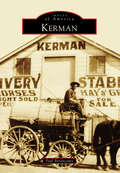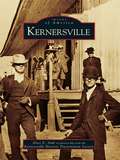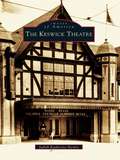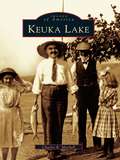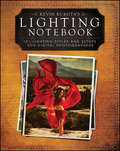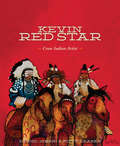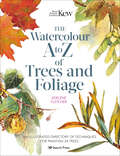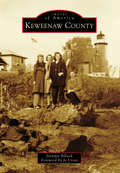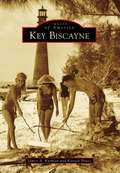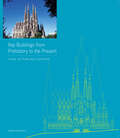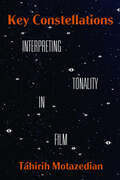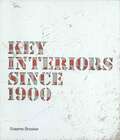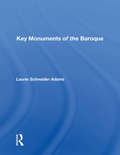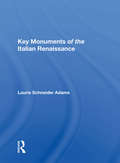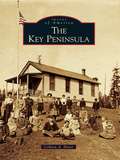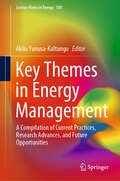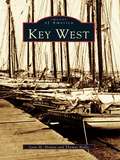- Table View
- List View
Kenzo Tange and the Metabolist Movement: Urban Utopias of Modern Japan
by Zhongjie LinMetabolism, the Japanese architectural avant-garde movement of the 1960s, profoundly influenced contemporary architecture and urbanism. This book focuses on the Metabolists’ utopian concept of the city and investigates the design and political implications of their visionary planning in the postwar society. At the root of the group’s urban utopias was a particular biotechical notion of the city as an organic process. It stood in opposition to the Modernist view of city design and led to such radical design concepts as marine civilization and artificial terrains, which embodied the metabolists’ ideals of social change. Tracing the evolution of Metabolism from its inception at the 1960 World Design Conference to its spectacular swansong at the Osaka World Exposition in 1970, this book situates Metabolism in the context of Japan’s mass urban reconstruction, economic miracle, and socio-political reorientation. This new study will interest architectural and urban historians, architects and all those interested in avant-garde design and Japanese architecture.
Kenzo Tange and the Metabolist Movement: Urban Utopias of Modern Japan
by Zhongjie LinAmid Japan’s political turbulence in 1960, seven architects and designers founded Metabolism to propagate radical ideas of urbanism. Kenzō Tange’s Plan for Tokyo 1960 further celebrated urban expansion as organic processes and pushed city design to an unprecedented scale. Metabolists’ visionary schemes of the city gave birth to revolutionary design paradigms, which reinvented the discourse of modern Japanese architecture and propelled it through the years of Economic Miracle to a global prominence. Their utopian concepts, which often envisaged the sea and the sky as human habitats of the future, reflected fundamental issues of cultural transformation and addressed environmental crises of the postindustrial society. This new edition expands Zhongjie Lin’s pathbreaking account on Tange and Metabolism centered at the intersection of urbanism and utopianism. The thorough historical survey, from Metabolism’s inauguration at the 1960 World Design Conference to the apex of the movement at Expo ’70 and further to the recent demolition of Nakagin Capsule Tower, leads to a definition of three Metabolist urban paradigms – megastructure, group form, and ruins – which continue to inspire experiments in architecture, city design, and conservation. Kenzō Tange and the Metabolist Movement is a key book for architectural and urban historians, architects, and all those interested in avant-garde design, Japanese architecture, and contemporary urbanism.
Keokuk and the Great Dam
by John E. HallwasThis remarkable pictorial history tells the story of an engineering marvel: the first dam built across theMississippi River (from 1910-1913), and the historicMidwestern community that fostered the world-famoushydroelectric project. Keokuk and the Great Dam is the story of a colorful and historic river town with a dream of economic development and cultural progress; a self-taught engineer who took on a challenge that no one else wanted to attempt; and a massive construction effort that pitted men and machines against the awesome power of America's greatest river. Completed shortly before WWI, the Keokuk dam (now known as Lock and Dam No. 19) was the culmination of a long struggle to employ the Mississippi River for hydroelectric power and to improve navigation on the great waterway. In frontier days the Des Moines Rapids, stretching north from Keokuk, prevented loaded steamboats from moving upriver. They also created a business opportunity for local residents. A rapidly growing town by the 1850s, Keokuk went into decline for many years when it failed to secure adequate railroad connections. But the coming of hydroelectric powerfostered a new dream, and local leaders set out to harness the great river. What followed was a dramatic effort that drew international attention, produced the world's second largest dam (at the time), and forever changed both the community and the fabled American waterway.
Kerman (Images of America)
by Paul BetancourtKerman sits in the heart of California's great San Joaquin Valley. First established in 1891 as a train stop for the Southern Pacific Railroad, the town site was originally named Collis Station for the railroad's president, Collis P. Huntington. Even in its earliest days, agriculture was the driving force behind Kerman's economy. Advances in irrigation as well as Kerman's close proximity to two of the region's largest rivers--Kings and San Joaquin--resulted in abundant access to water, attracting farmers and land investors at the start of the 20th century. As the community grew, alfalfa hay, raisins, and dairy products became mainstays in Kerman's agricultural production. By 1910, Kerman had a volunteer fire department, a library, and new businesses. Images of America: Kerman explores the first 80 years of a town that continues to grow and diversify.
Kernel Learning Algorithms for Face Recognition
by Jeng-Shyang Pan Jun-Bao Li Shu-Chuan ChuKernel Learning Algorithms for Face Recognition covers the framework of kernel based face recognition. This book discusses the advanced kernel learning algorithms and its application on face recognition. This book also focuses on the theoretical deviation, the system framework and experiments involving kernel based face recognition. Included within are algorithms of kernel based face recognition, and also the feasibility of the kernel based face recognition method. This book provides researchers in pattern recognition and machine learning area with advanced face recognition methods and its newest applications.
Kernersville (Images of America)
by Kernersville Historic Preservation Society Alice E. SinkNative Americans first inhabited the eastern Forsyth County area, a natural watershed and source of six rivers and creeks. About 1756, Irishman Caleb Story settled here on 400 acres of wooded land. Years later, Story sold his land to David Morrow for a purported four gallons of rum. About 1771, William Dobson purchased the original acreage and additional tracts and built an inn near what is now Mountain Street and Main Street. He named this junction Dobson'sCrossroads. On June 2, 1791, President George Washington ate breakfast at Dobson's Tavern. On November 14, 1817, German-born Joseph Kerner (also spelled K¶rner) purchased the land and renamed the area Kerner's Crossroads. This begins the story of Kernersville. The same roads, still graced with historic churches, stores, and homes, crisscross at the heart of this community. K¶rner's Folly, which contains 22 rooms, housed the first private little theater in America.
Keswick Theatre, The (Images of America)
by Judith Katherine HerbstThe Keswick Theatre, located just outside Philadelphia, opened in 1928 in an era when four thousand similar structures were in various stages of design and construction across the country. Vaudeville was in its final days and film was just being born. Designed by acclaimed architect Horace Trumbauer, the theater evolved into the area's premier movie house. When the theater was threatened with demolition in the early 1980s, the Glenside Landmarks Society was formed with the hopes of restoring the building to its former grandeur. Today, operating as a commercial venture, it is one of the most acclaimed concert halls in the Philadelphia area. The Keswick Theatre celebrates this historic landmark through vintage images and recognizes the dedicated community members who have kept its doors open.
Keuka Lake
by Charles R. MitchellNestled among the hills of western New York State is the beautiful lake Keuka, the Indian word for "canoe landing." Once visited, the loveliness and serenity of this particular lake in New York's Finger Lakes region draws people back. Visitors return to stay for a week or the summer, and tourists come back, often annually. Many who have lived or summered at the lake return to retire. Keuka Lake brings back the time period from 1850 to 1960, the era of black-and-white photography. Featured are the local grapes and wineries, the steamboats, the commercial activities on and around the lake, and the lake itself. Today, the boats are no longer steam powered and the wineries are more plentiful, but other aspects of life have not changed. The residents are hospitable; the pace is slow; the lake is resplendent and inviting.
Kevin Kubotas Lighting Notebook
by Kevin KubotaGet professional advice from one of the world's top wedding photographersCreative use of lighting is a hallmark of quality photography. Kevin Kubota has been listed among the world's top 10 wedding photographers by American Photo magazine and named a Legend Behind the Lens by Nikon. This guide features dozens of his unique lighting and post-production recipes and techniques, each illustrated with a spectacular image.Author Kevin Kubota enjoys a cult-like following among professional photographers and has earned numerous accolades for his talentIncludes the author's unique lighting and post-production recipes and techniques that reinforce the theory that good lighting is the key to quality photographyPresents a number of shooting scenarios with behind-the-scenes setup, a description of the photographer's objective, the equipment used, and the resulting image for eachFeatures a companion app that will enable the photographer to search and find lighting suggestions by subject, style, budget, equipment, and other guidelines, all while in the fieldKevin Kubota's Lighting Notebook for Digital Photographers is almost like having the famous photographer sharing his secrets with you one on one.
Kevin Red Star: Crow Indian Artist
by Kitty Leaken Daniel GibsonThe life, work, and inspiration of the acclaimed Native American artist are explored in this beautifully illustrated book. Born and raised on the Crow reservation in southern Montana, Kevin Red Star celebrates the history and culture of the Crow Nation with his artwork. As a visual historian of his people, he explores traditional roots with a contemporary outlook, producing a body of work that is revered by galleries, museums, and collectors. Author Daniel Gibson and photographer Kitty Leaken showcase the talents of Red Star in this collection of artwork while also exploring his life and artistic development. Red Star&’s friends and family, his childhood on the reservation, and his time at the Institute of American Indian Arts and San Francisco Art Institute all feed into his iconoclastic and ever-evolving artwork.
Kew - Fragrance: From plant to perfume, the botanical origins of scent
by Royal Botanic Kew Josh Carter Samuel GearingFlowers, fruits, herbs, resins, woods, spices. From bloom to bottle, the subtle art of perfume has always had its roots in the natural world.Fragrance reveals the botanical backgrounds of 100 intoxicating ingredients that define scents from Chanel No5 to Opium. Evocative insights from experts at the Royal Botanic Gardens, Kew, and fragrance specialists Josh Carter and Samuel Gearing combine with beautiful botanical illustrations in this enchanting distillation of the origins of perfume.
Kew - Fragrance: From plant to perfume, the botanical origins of scent
by Royal Botanic Kew Josh Carter Samuel GearingFlowers, fruits, herbs, resins, woods, spices. From bloom to bottle, the subtle art of perfume has always had its roots in the natural world.Fragrance reveals the botanical backgrounds of 100 intoxicating ingredients that define scents from Chanel No5 to Opium. Evocative insights from experts at the Royal Botanic Gardens, Kew, and fragrance specialists Josh Carter and Samuel Gearing combine with beautiful botanical illustrations in this enchanting distillation of the origins of perfume.
Kew: An Illustrated Directory of Techniques for Painting 24 Trees
by Adelene FletcherTrees have inspired artists for generations. This unique watercolour artist's guide offers easy-to-follow, plant-specific information on how to paint a wonderful selection of the most popular species of trees. Beginning with a useful section on materials, the book then comprises an illustrated directory of 24 trees, from Acer to Zelkova. Step-by-step sequences show how to paint each one in a fresh, lively style with all the essential details of shape and form beautifully captured. The author explores the overall shapes and masses of branches and leaves, outlines in full foliage, winter trees, branch and twig details, and presents stunning leaf and flower portraits shimmering with life. A source of inspiration, as well as a manual of techniques, this book is a must-have for every tree painter. Purchase of this book supports the vital work of Kew – saving plants and fungi around the world that might one day save us.
Keweenaw County
by Jennifer Billock Jo UrionAlthough the largest Michigan county with land and water combined, Keweenaw County is also the most sparsely populated--at least during the vicious winters. The population blooms in the summertime when seasonal residents come in droves to enjoy their little slice of heaven. The county was formed in 1861 as an offshoot of Houghton County and now encompasses the top half of the Keweenaw Peninsula, where Michigan's Upper Peninsula juts north into Lake Superior. Throughout the 1800s, the area was at the center of the copper mining boom, spurring construction of Fort Wilkins in Copper Harbor. The military outpost served to keep order among miners and the area's native inhabitants, the Ojibwa. Moving through time, Keweenaw County would also serve as a hub for the maritime, fishing, and lumbering industries before becoming the resort community it is today.
Key Biscayne
by Kirsten N. Hines James A. KushlanKey Biscayne is an island paradise umbilically connected to Miami by a three-and-a-half-mile-long causeway. Its recorded history is one of the longest in North America, starting five centuries ago with Juan Ponce de León's arrival, the second official landing of Europeans in North America after Columbus. For centuries, Key Biscayne was an important landmark for Gulf Stream mariners, and the Cape Florida Lighthouse, built in 1825, is the oldest remaining structure in the region. The key was the site of an infamous Indian attack, a Second Seminole War military base, scientific expeditions, a Civil War raid, a tropical plantation, and finally a residential village and county, state, and national parks. When the key served as Richard Nixon's vacation White House, its worldwide fame grew. Key Biscayne now hosts a multinational community and hundreds of thousands of visitors annually.
Key Buildings from Prehistory to the Present: Plans, Sections And Elevations
by Andrew BallantyneThe latest in this successful series, this book features around 150 of the most important buildings in the history of world architecture – from the pyramids and Parthenon to some of the most significant works by recent architects. The buildings are organized by type – from places of worship and public buildings to houses – and are divided into nine chapters, each with an informative introduction that surveys the history of that type. For each building there are numerous, accurate scale drawings showing a combination of floor plans, elevations and sections as appropriate, all specially redrawn for this book. The quality and number of the line drawings, together with the authoritative text by a renowned architectural historian, allow all the buildings to be understood in detail and make this an invaluable resource for students.
Key Buildings from Prehistory to the Present: Plans, Sections, Elevations (Plans, Sections and Elevations)
by Andrew BallantyneThe latest in this successful series, this book features around 150 of the most important buildings in the history of world architecture – from the pyramids and Parthenon to some of the most significant works by recent architects. The buildings are organized by type – from places of worship and public buildings to houses – and are divided into nine chapters, each with an informative introduction that surveys the history of that type. For each building there are numerous, accurate scale drawings showing a combination of floor plans, elevations and sections as appropriate, all specially redrawn for this book. The quality and number of the line drawings, together with the authoritative text by a renowned architectural historian, allow all the buildings to be understood in detail and make this an invaluable resource for students.
Key Constellations: Interpreting Tonality in Film (California Studies in Music, Sound, and Media #4)
by Táhirih MotazedianKey is one of the simplest building blocks of music and is among the foundational properties of a work’s musical identity—so why isn’t it a standard parameter in discussing film music? Key Constellations: Interpreting Tonality in Film is the first book to investigate film soundtracks—including original scoring, preexisting music, and sound effects—through the lens of large-scale tonality. Exploring compelling analytical examples from numerous popular films, Táhirih Motazedian shows how key and pitch analysis of film music can reveal hidden layers of narrative meaning, giving readers exciting new ways to engage with their favorite films and soundtracks.
Key Interiors since 1900
by Graeme BrookerThis book defines the history of modern interior design through the reuse of existing buildings. This approach allows the history of the interior to be viewed as separate from the history of architecture and instead enables the interior to develop its own historical narrative.The book is organized around six thematic chapters: home, work, retail, display, leisure and culture. Each one comprises a selection of case studies in chronological order. 52 key examples dating from 1900 to the present are explored in terms of context, concept, organization and detail and are illustrated with photographs, plans, sections, concept drawings and sketches. This unique history will be invaluable for students of interior architecture and design seeking a survey tailored especially for them, as well as appealing to interested general readers.
Key Interiors since 1900
by Graeme BrookerThis book defines the history of modern interior design through the reuse of existing buildings. This approach allows the history of the interior to be viewed as separate from the history of architecture and instead enables the interior to develop its own historical narrative.The book is organized around six thematic chapters: home, work, retail, display, leisure and culture. Each one comprises a selection of case studies in chronological order. 52 key examples dating from 1900 to the present are explored in terms of context, concept, organization and detail and are illustrated with photographs, plans, sections, concept drawings and sketches. This unique history will be invaluable for students of interior architecture and design seeking a survey tailored especially for them, as well as appealing to interested general readers.
Key Monuments Of The Baroque
by Laurie Schneider AdamsThis book focuses on key monuments of the Baroque style, which varies in different European contexts. It is intended to affirm the existence of individual genius, identifiable styles of art, and historical periods that produced them.
Key Monuments Of The Italian Renaissance
by Laurie Schneider AdamsOrganized chronologically from early Renaissance precursors to the Mannerist movement, from Giotto to Titian, Key Monuments of the Italian Renaissance describes and analyzes in depth from various points of view major works and major artists, from the fourteenth to the sixteenth centuries. Artists included are Cimabue, Duccio, Giotto, Lorenzetti, Gh
Key Peninsula, The
by Collen SlaterThe Key Peninsula is a scenic finger of land that stretches south between Case and Carr Inlets in Washington State. Few people lived there before 1850, although Native Americans fished and hunted from temporary villages. Several communities, each with a unique history, took root near the various bays and inlets of the peninsula, and by the 1890s, many areas bustled with schools, post offices, mills, churches, and stores. Logging, orchards, and chicken farms supported these early pioneers. Cut off from the mainland, the waters of Puget Sound provided transportation. The famous Mosquito Fleet carried products such as fruit, seafood, chickens, eggs, and butter to Olympia, Tacoma, and Seattle until the advent of the ferries and, later, the bridges. Many of today's "oldtimers" are just two or three generations distant from the original hardy settlers, but the area's residents are proud of the heritage of this unique place they call home.
Key Themes in Energy Management: A Compilation of Current Practices, Research Advances, and Future Opportunities (Lecture Notes in Energy #100)
by Akilu Yunusa-KaltungoThis book provides a comprehensive global coverage of energy management as it relates mostly to developing countries. In an era of unprecedented global population growth, the demand for energy has reached staggering levels. The United Nations reported an enormous 200% increase in population between 1950 and 2020, with projections indicating a further rise to 10.9 billion by 2100. As a direct consequence, global primary energy usage has surged from 3701 Mtoe in 1965 to 13511 Mtoe in 2017, putting immense strain on existing energy sources. If current growth rates persist, these sources could be depleted within a mere 130 years. To address this impending crisis, governments worldwide have implemented regulations and incentives to promote energy conservation. While numerous studies and publications have emerged within the field of energy management, there remains a significant research gap, particularly concerning the energy challenges faced by developing countries. Existing edited books on energy-related topics often narrowly focus on specific aspects, hindering readers from gaining a holistic understanding of energy management challenges and potential solutions. This book fills this void. Recognizing the pivotal role these nations play in achieving sustainable development goals, this book provides a wide-ranging perspective on the trends, challenges, and potential solutions to energy crises in these regions. It not only acknowledges the challenges faced by developing countries but also offers viable strategies to address them. The editor, leveraging his successful leadership experience in global academic endeavors, including publishing a book on Occupational Safety & Health practices during the COVID-19 era and coordination of multinational research projects, is well positioned to bring together exceptional chapters from various countries. His extensive network ensures the inclusion of diverse perspectives, enriching the book's content and offering invaluable insights to readers. Designed for a broad readership, including energy industry organizations, professionals, researchers, government bodies, policymakers, and students, this book delves into a wide array of energy management issues. By facilitating a comprehensive understanding of the subject, it equips readers with the knowledge and tools necessary to navigate the complex landscape of energy management in the modern world.
Key West (Images of America)
by Lynn M. Homan Thomas ReillyMuch more than the typical vacation destination, Key West combines a free-spirited ambiance with magnificent coral reefs, a unique historic legacy with an enduring artistic sensibility. For centuries, explorers and adventurers, immigrants and entrepreneurs, artists and wanderers have come to the island oasis, and today Key West, a city like no other, is home to them all. Through hurricanes, fires, labor strikes, and the tourism boom, the community of Key West has sustained a unique way of life and attracted a wide variety of people to its shores, including such famous figures as writers Ernest Hemingway and Tennessee Williams, President Harry Truman, and musician Jimmy Buffett. Whether strolling through the downtown historic district, searching eclectic shops for one-of-a-kind treasures, enjoying a piece of key lime pie, or participating in the look-alike contest during Hemingway Days, Key West offers endless opportunities for pleasure. The landmarks, the people, and the continuing story of Key West are the entertaining subject of this new photographic tribute.



